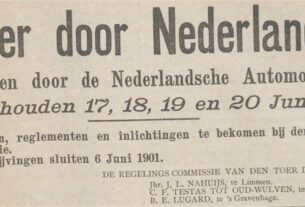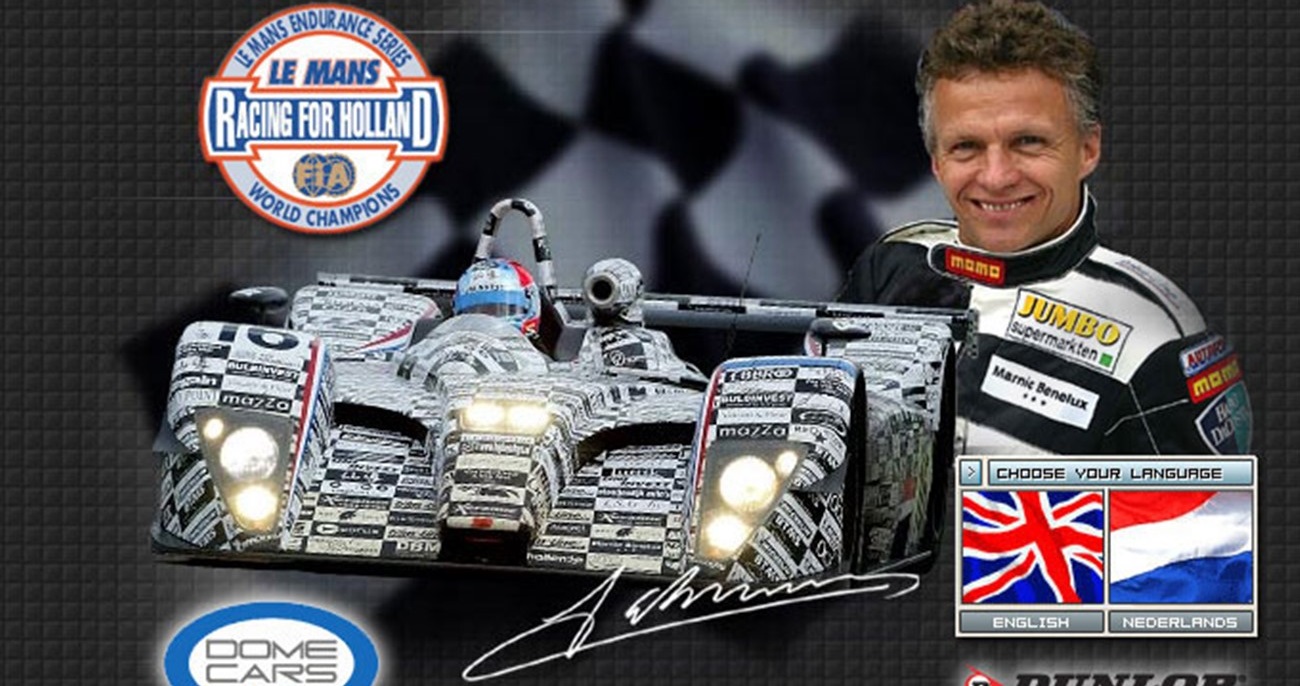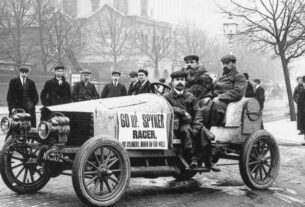For everything there is a first time. While the first automobiles were constructed in the mid-1880s the public’s interest came with the “first” race held in 1894. The announcement for this event was already done the 19th of December 1893 in Le Petit Journal. While it was not the first race, it was the first one with a serious field of competitors. In the shadow of this success more races were held and organised. Four years later the first race would see Dutch soil. It was the 1898 Paris-Amsterdam race. However, the first time a car appear on Dutch soil was in September 1896, when a Daimler 4 HP was unloaded from a train at a station in Amsterdam.
The Daimler car was from notary J.P. Backx who lived in Wieringerwaard. The story goes that he and his wife were in early 1896 in Paris when they countered a steam engine car. He saw the advantage of the car and the easier way to move from point A to B. As a notary he belonged to the upper class in the Netherlands. He got the idea to purchase a car himself. The main reason was the fact that he could reach more people for his business as he could travel more than usually with the horses he had.
Being inspired in Paris, he tested a couple of times with several cars before he was looking for a manufacturer for his own car. Eventually the German company Daimler was chosen to produce the car. The design of the Daimler 4 HP was a Victoria one which was one of the models in the early days of the automobiles. The car arrived in September in Amsterdam and was unloaded from the train. With it there was a mechanic from the Daimler factory who had to setup the car. However, when making it’s first meters in the narrow streets of Amsterdam he said that he got scared driving there. As the risk was too big to end up in the water or get an accident.
Eventually it was Backx his coachman who continued the driving of the car through the narrow streets of Amsterdam. He was there as well as he would learn from the mechanic how the car has to be driven. When the car was setup correctly the Daimler company asked for a propaganda tour through the streets of Amsterdam. So they did they drove through the crowded Kalverstraat, Damrak and other streets before they would leave the city for Wieringerwaard. Interestingly, on the car were also inspector of transportation van Oosten who was really interested in the car and the highest police officer.
Once the propaganda tour was finished, with many people amazed and horses shocked by the machine that appeared on the streets, they went on their way to Wieringerwaard. This was a 77km long trip. Today just an hour drive, back then it would have taken many hours. They went from Amsterdam via Purmerend, Alkmaar, Schagen to eventually arrive in Wieringerwaard. Keep in mind this was in 1896! A time when roads were not the roads we are used to today. In 1896 99,5% of the people in the Netherlands had never encounted an automobile. There were even people who didn’t seen a train before. The shock must have been enourmous. It is also what you read in the legacy.
People came out of their houses when they heard the heavy 4HP engine ploughing through the streets leaving a dust cloud in every street. People were shouting, people were raising their fist, people became angry or believed they saw the devil himself. However, there were also the people that saw with a huge interest the Daimler 4HP ploughing through their street. Thinking what the near future would bring with this new machine on the roads. Would they eventually replace the horses? Will we become more mobile and free?
It was the start of the automobile in the Netherlands, the start of a revolution that would take a long time.




